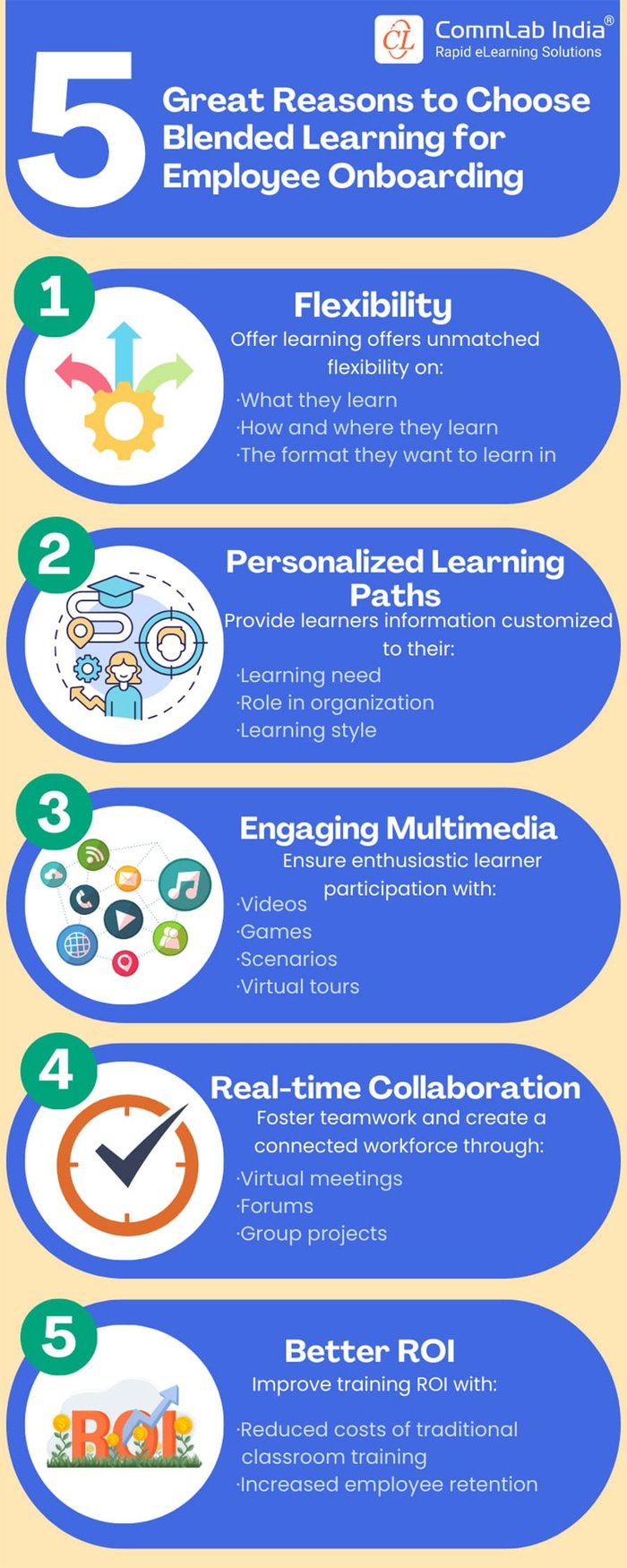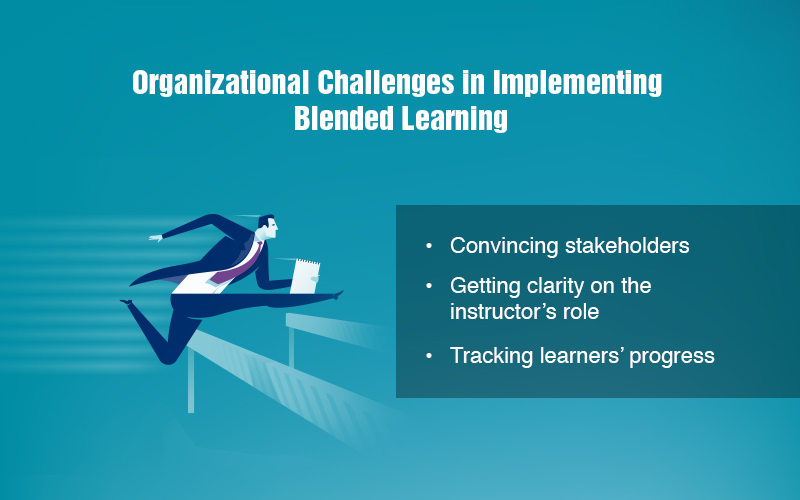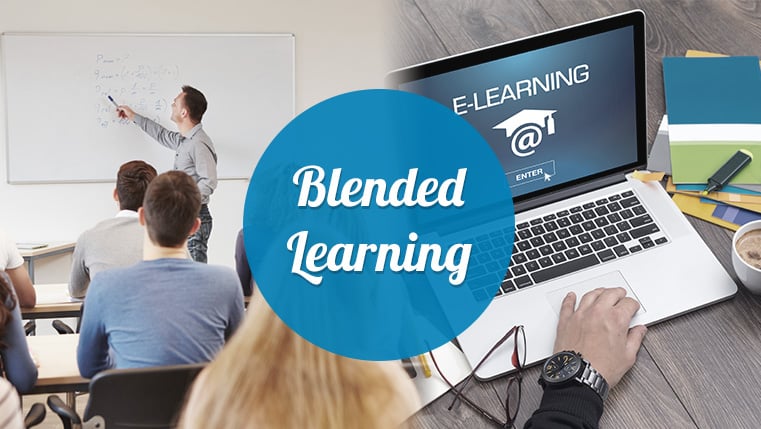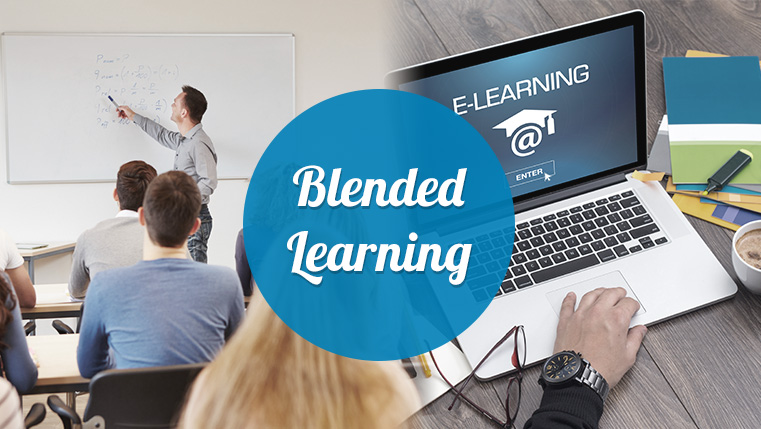5 Reasons to Choose Blended Learning for Employee Onboarding [Infographic]
![5 Reasons to Choose Blended Learning for Employee Onboarding [Infographic] 5 Reasons to Choose Blended Learning for Employee Onboarding [Infographic]](https://blog.commlabindia.com/hubfs/reasons-choose-blended-learning-employee-onboarding-info.jpg)
Do you remember the feeling of joining a new company and the wave of emotions that accompany it? From excitement to nervousness, embarking on a new professional journey is undeniably an experience of a lifetime. And this is why ensuring a positive, balanced onboarding process is so important. You should focus on providing your employees with vital information about the company without overwhelming them. It sets the right tone for a positive and productive work association. But how can you facilitate an engaging, seamless onboarding experience for your employees? One effective method is blended learning. It enables you to strike a balance between providing information and not stressing out the employees. Interesting, right?In this blog, we’ll delve into the details of why you should choose blended learning for employee onboarding. Not just that, we’ll first start with the basics to set the stage right. We’ll understand what blended learning is and its benefits in corporate training.
Are you ready? Let’s start!
What is Blended Learning?
Blended learning is a training method that combines online and offline mode of learning. In simple words, it takes the best aspects of traditional classroom training and digital learning methods and blends them to provide a comprehensive, engaging training experience. In the context of employee onboarding, blended learning ensures that newcomers receive the necessary information without drowning in an information overload.
→ Download Now: Deploy Blended Learning to Flatten the Forgetting Curve
5 Reasons to Choose Blended Learning for Employee Onboarding
Tips to Make the Most of Blended Learning
Designing a high-impact blended learning program requires a thoughtful and strategic approach. As it leverages the strengths of both traditional and digital learning methods, here are some key tips to ensure the success of your blended learning initiative:
Define Learning Objectives Clearly
First things first. Enlisting the learning objectives clearly is the key to ensuring a high-impact blended learning program. So make sure you set the right learning objectives. You can start by conducting a training need analysis, identifying skill and knowledge gaps, and analyzing the business goals. This clarity will guide your course creation process and assessment strategies.
Understand Your Audience
Your learners are the deciding factors of the fate of your blended learning program. So it’s essential to be well-versed with their learning styles, educational experience, work experience, and training needs. These aspects will enable you to design your blended learning program in a manner that strikes a chord with them and promotes learner engagement to maximize the training ROI.
Moreover, you can curate training content, and select relevant instructional design strategies, multimedia elements, interactivities, assessment types, etc., based on your target audience. Therefore, it’s crucial to understand the audience of your training program.
Ensure Seamless Integration
While online and offline learning methods vary a lot, it’s important to strike a balance between the two to attain maximum efficiency. The integration between the two must be seamless and well-planned so that learners make the most of this blend. Your online learning material must support and be relevant to the concepts planned for the offline interactions. Proper sync between the two fosters continuous learning.
In The End!
Blended learning offers a plethora of benefits in corporate training in general and employee onboarding specifically. It provides the learners with the best of both online and offline learning methods to maximize engagement, attentiveness, and training ROI. Blended learning is a godsent for modern day learning needs as it strikes a balance between the advantages of online learning such as flexibility, accessibility, better engagement and offline learning such as rapport building, collaboration, discussion, etc. Check out the webinar recording below to know how blended learning beats the forgetting curve to deliver maximum results.







